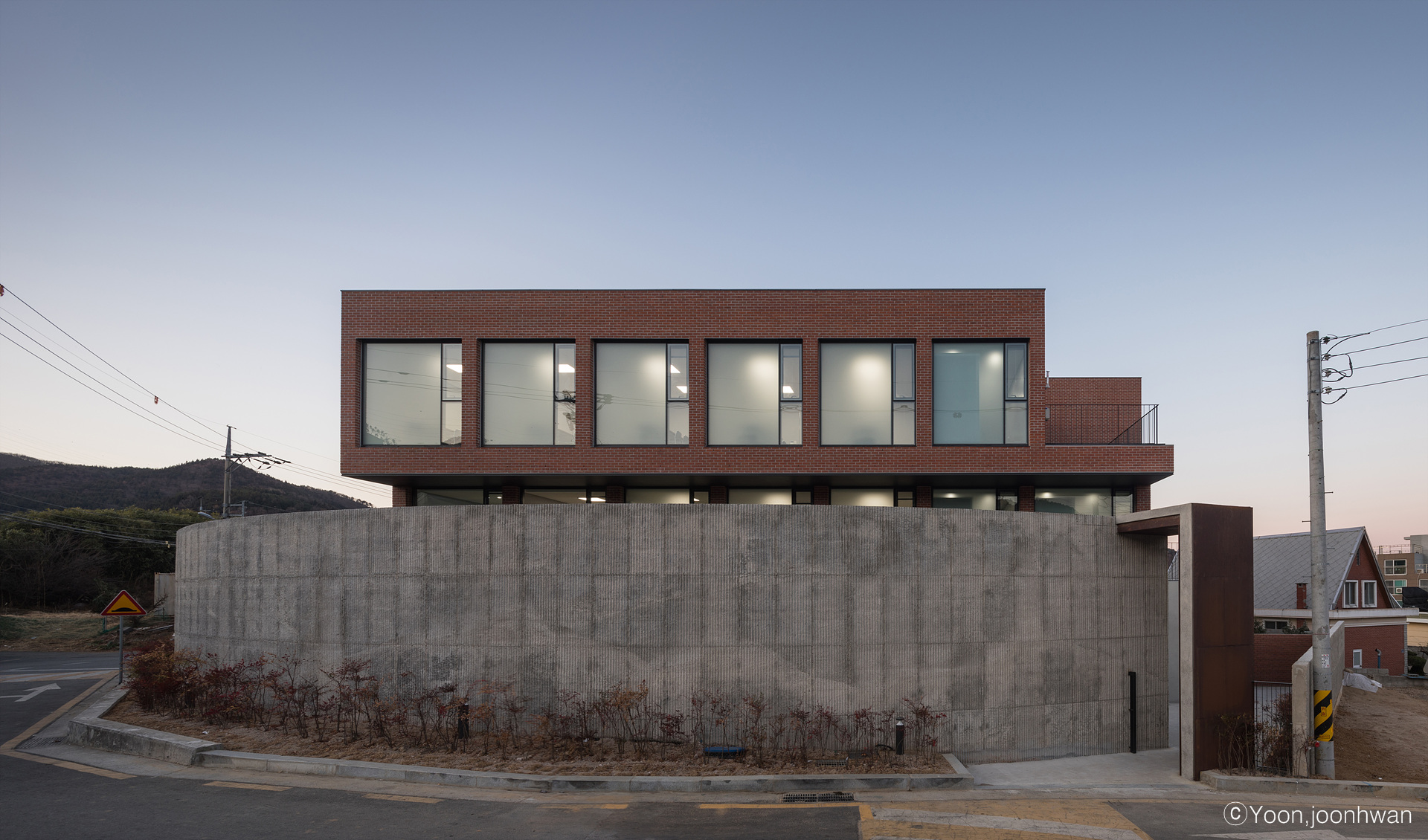A Wall of Silence: Disconnect to Connect
The Catholic Busan Barefoot Carmelites is a group of around 300 Busan based catholic church members who voluntarily study Catholic doctrine. The present project is its hall. The budget was limited, as the costs of purchasing the site and constructing the building had to be covered by the members alone. They did not receive any funding from the Busan diocese. The head priest does not live on the site, simply leading mass during gatherings, and the chapel plays the role of an auditorium for group learning activities for the members rather than serving as a central space of worship for mass. Three different classes congregate once a month, and these groups also meet sporadically in smaller groups
for additional learning activities. The project is composed of a chapel, which serves as an auditorium for group meetings, and eight small classrooms that can accommodate around ten people each for small group learning activities, as well as an office and meeting room, a book café for the members to interact, and a room for the guiding priest to
reside for the three days a week of gatherings.
The project began by reinterpreting the nature of the site, the inclinations of the group members and the main objectives of the gatherings. The site, in its irregular form, is situated in an old agricultural village, at a level approximately 1m lower than the adjacent road. The site originally featured a wooden-structured detached house with a large courtyard. The site’s surroundings used to consist mainly of red brick buildings, representative of tranquility often observed in the countryside village, but recently several storage centres and factories have begun to appear. The village also expressed their displeasure at accommodating the religious facility within its boundaries. The project demanded a certain degree of isolation from its neighbours, raising the issue of communication forward – a trait that is not too dissimilar to the character of the Carmelites group. The main objective of studying religious doctrine is represented through a space of silence, and it was necessary to consider noise pollution. Moreover, the members of the group are mainly retired and elderly, making accessibility and easy mobility a priority.
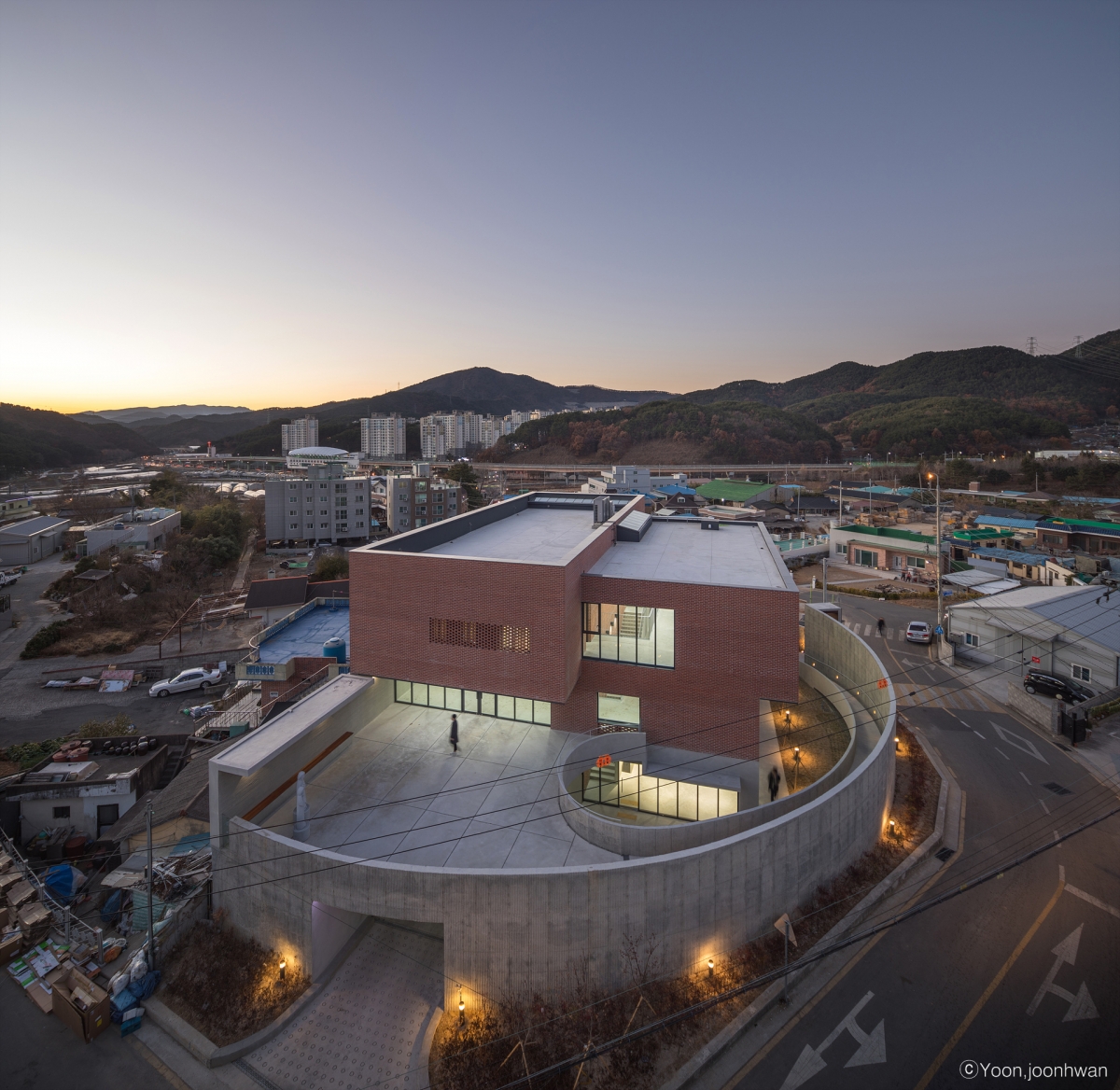
Foremost among the design concerns, with concrete moulds used to construct the reinforced walls, a rough curving concrete outer wall was composed by following the lines of the site. The original form of the exposed concrete wall, with its triangular ribbed pattern, accentuates the existing light once again, so that that the form in itself yields a sense of beauty. By installing a sloping path adjacent to this wall, an evolving space was composed to reflect a sense of consideration for the elderly. Following the slope upwards, one discovers a spacious deck madang facing the south; a meeting space. The courtyard is a space that serves to connect an evolving space (internal courtyard) with a space of silence (the chapel), to absorb any expansion of the latter. The internal space has been separated between the territories of a central auditorium and educational spaces, and the open stairwell with its skylights continues on to the classrooms on the third floor. The natural decks that guard the users’ right to sunshine and empty spaces here and there provide a leisurely atmosphere and pace, serving as an interface to the project’s surroundings. The circulation has been composed to repeat sequences of light and darkness, interior and exterior, making a variety of spatial experiences possible. The chapel has been finished with pine board exposed concrete and almost white, light grey exposed concrete slabs, in response to the light that enters through the skylights. The coldness of the neutral concrete subsides due to the chapel furnishings and the rosy light that enters through the hanji window frames.
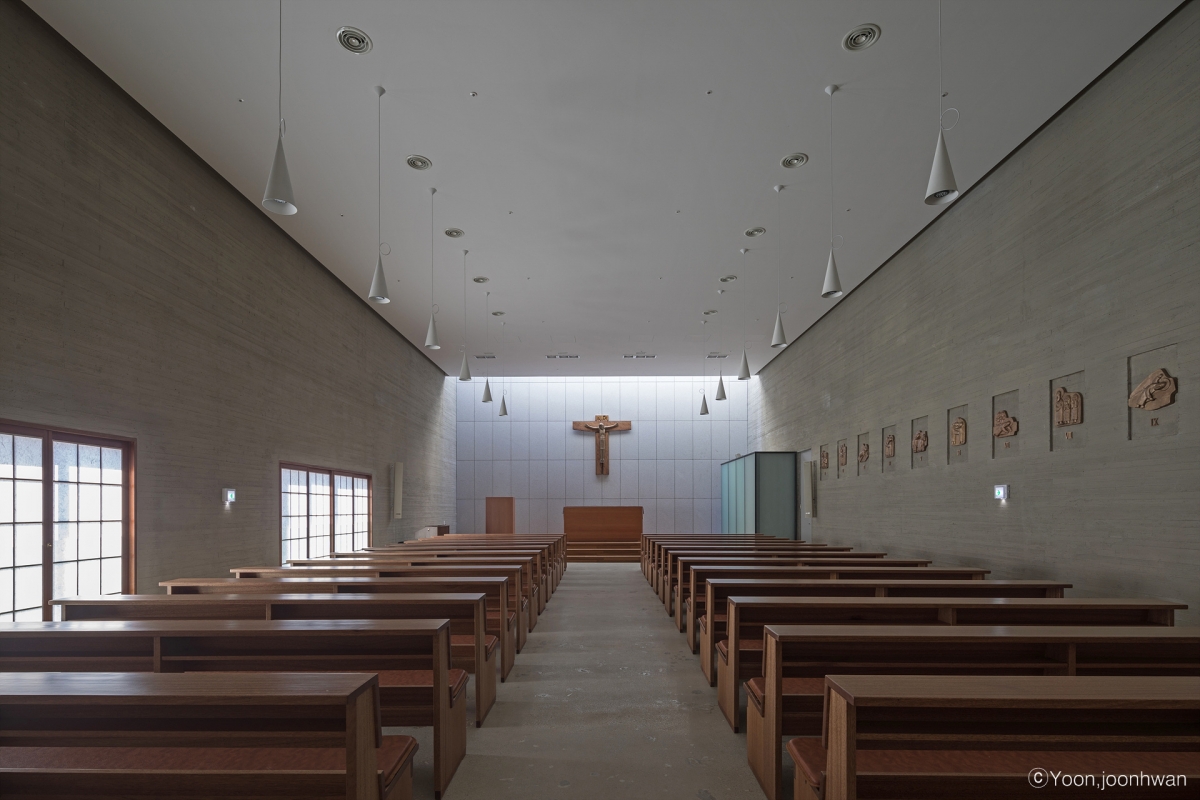
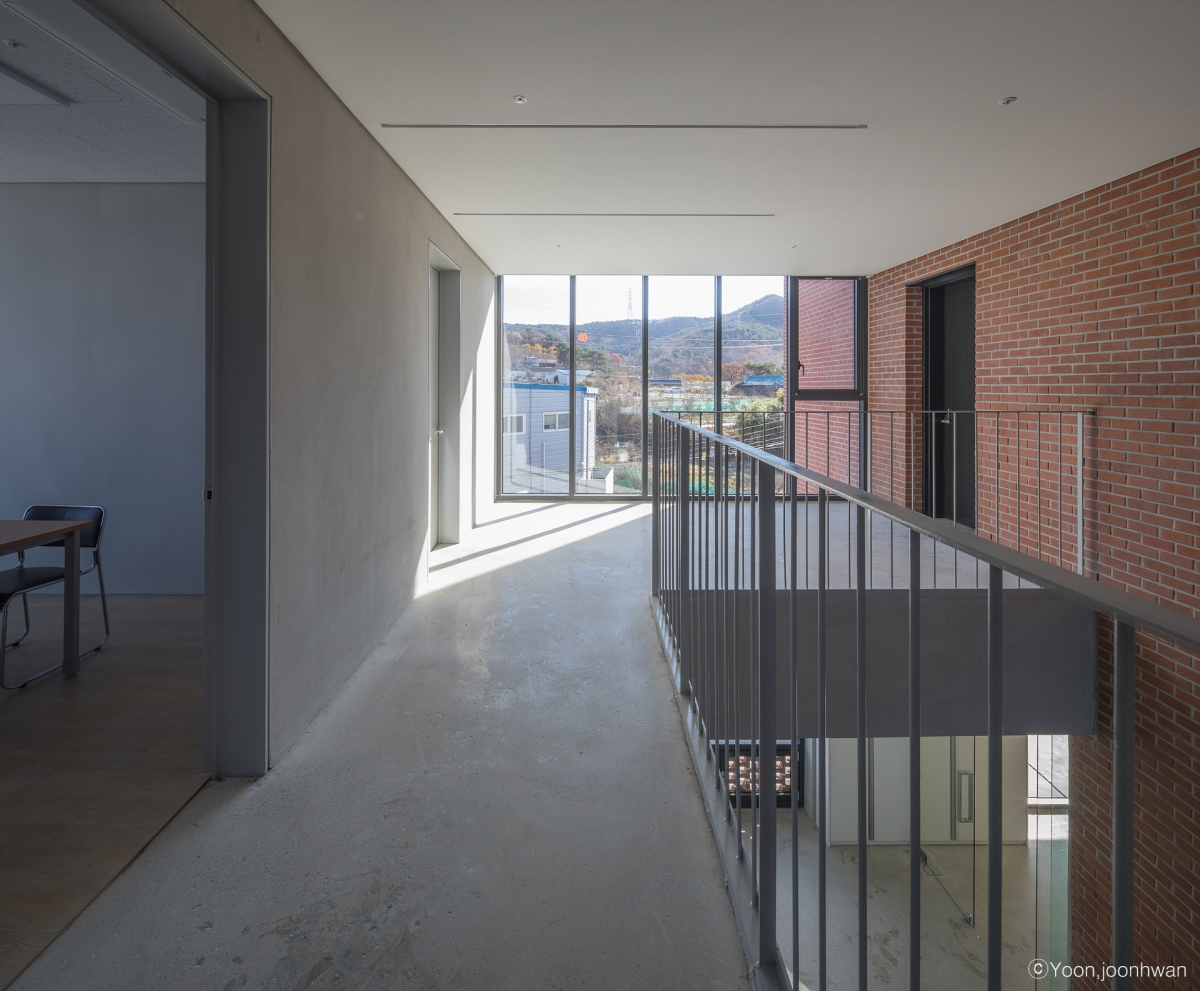
Considering the relatively high number of small-scale detached houses in the surrounding area, efforts were made to economize on the volume of the project. The height was agreed upon so as to not exceed the average height of its neighbours. The repeated use of the etching glass and transparent glass creates a sense of rhythm, and it is this device that also establishes an appropriate sense of distance when viewed from the road. The outerwall was planned to create a sense of harmony with the project’s surroundings, as well as to evoke the nature of a religious facility. The wall takes on a central role, in addition to the planted creeping ivy. It is hoped that this, along with the brick selected by examining the materials of the surrounding buildings, will become a part of the village with the passing of time. The pure cube form of the project was emphasised by using only the length-wise brick laying method, so that the structure of the ornamental brick would not be revealed, while the colour and depth of the joints were modified to diminish the overpowering sense of the project’s volume. The individuality of each of the bricks is revealed. This was intended to function in the same way as the former project, with the finishing of the project or the internal spatial composition expressed as simply and modestly as possible. The tranquil light that glints through the etching glass windows onto the classroom’s outer walls can also be read as a message pertaining to the social contributions promised by the serenity of the Discalced Barefoot Carmelites.
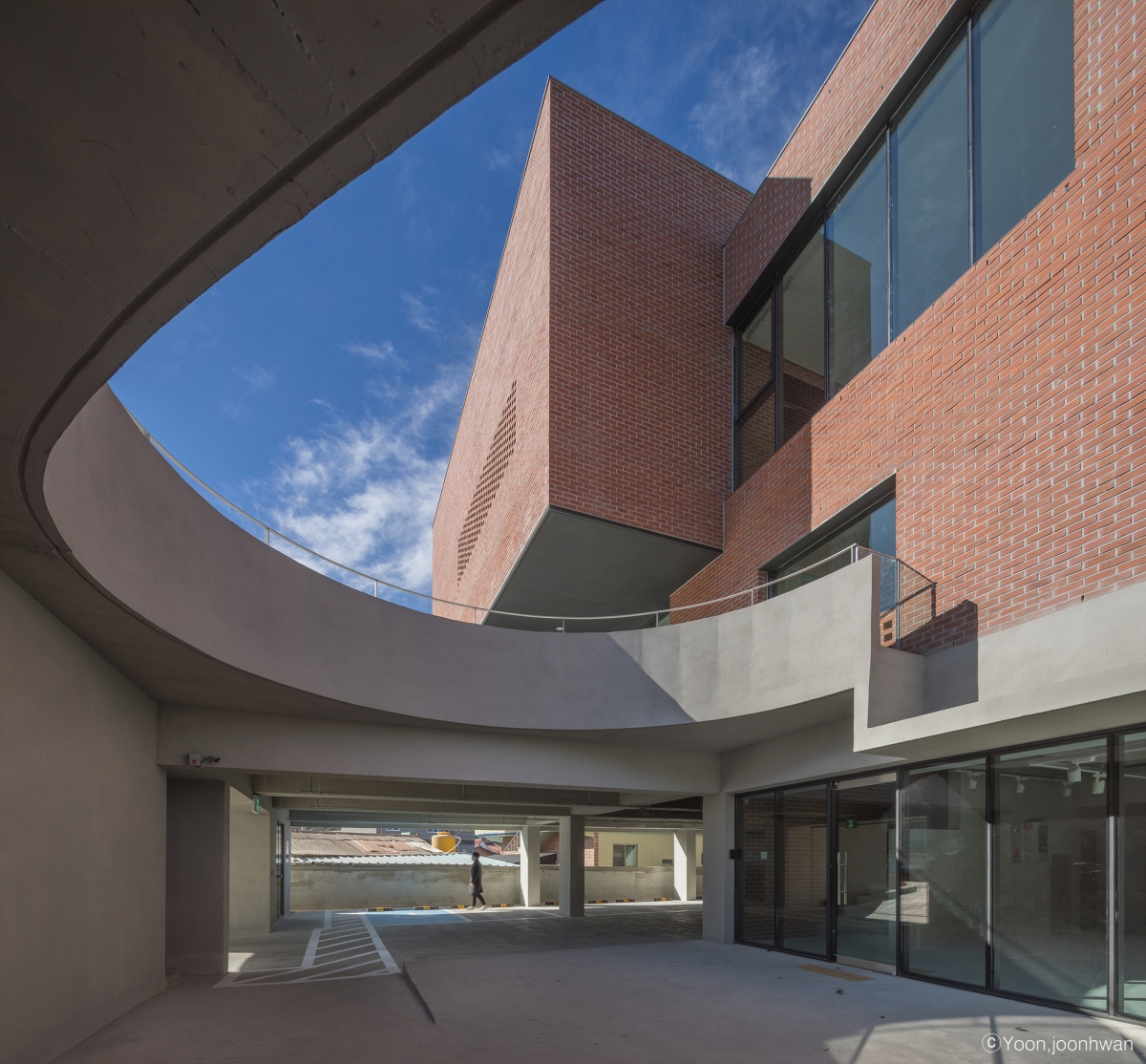
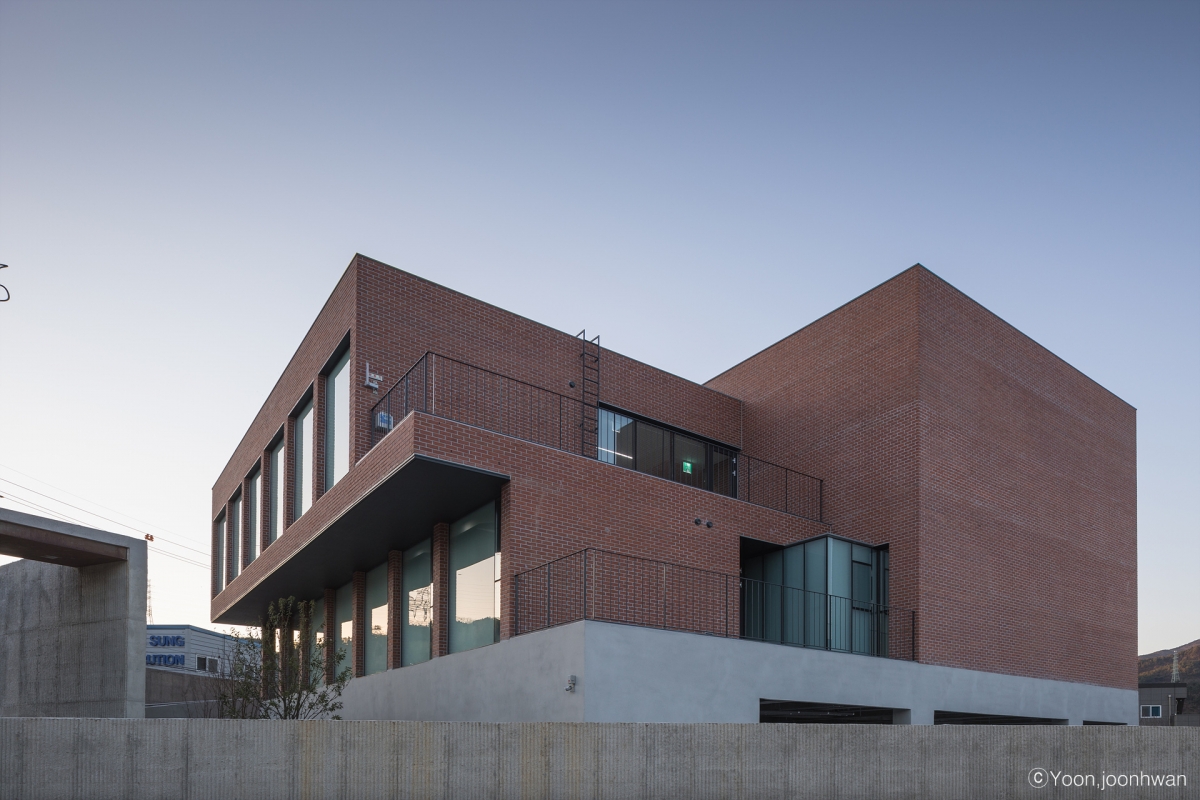
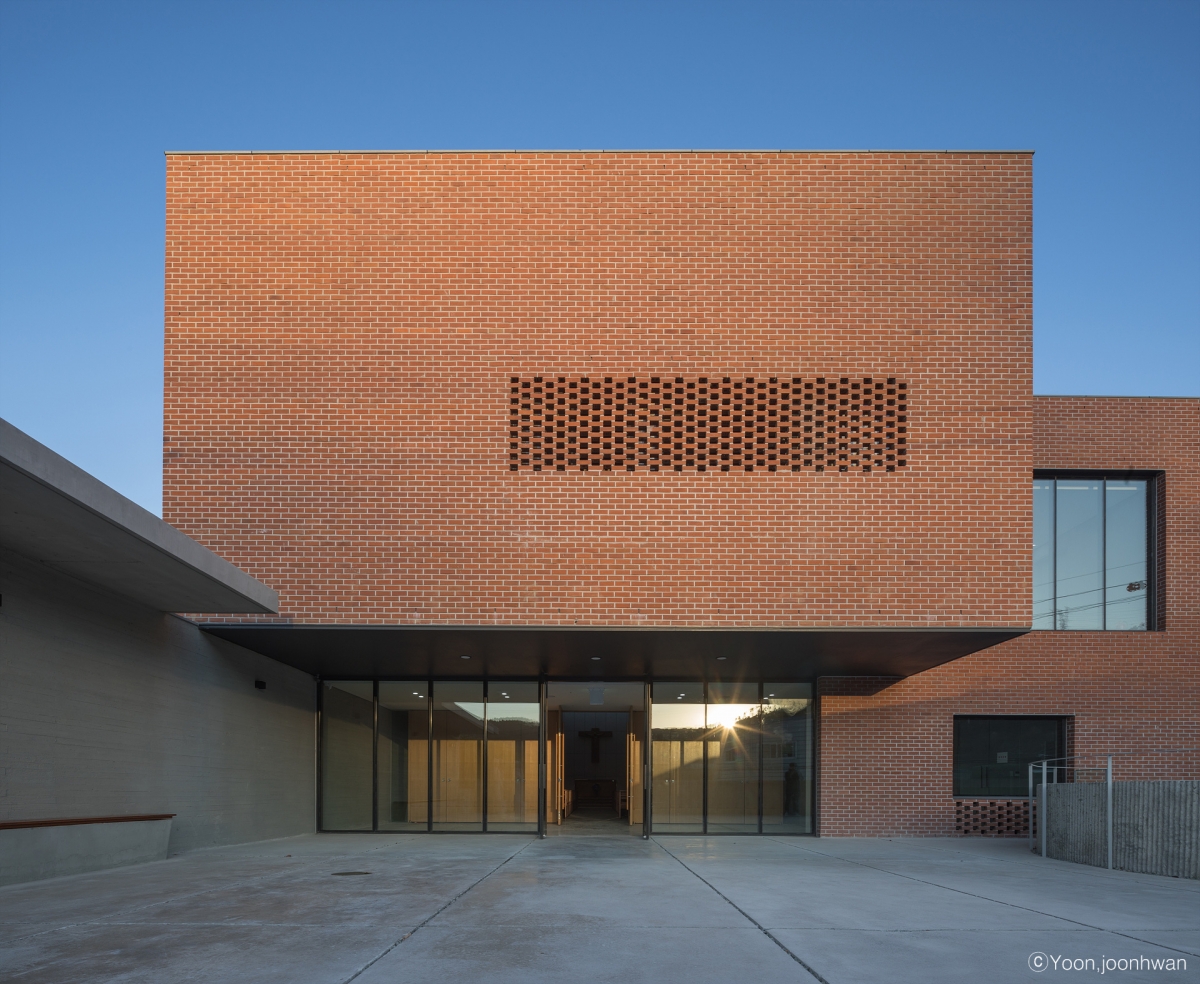
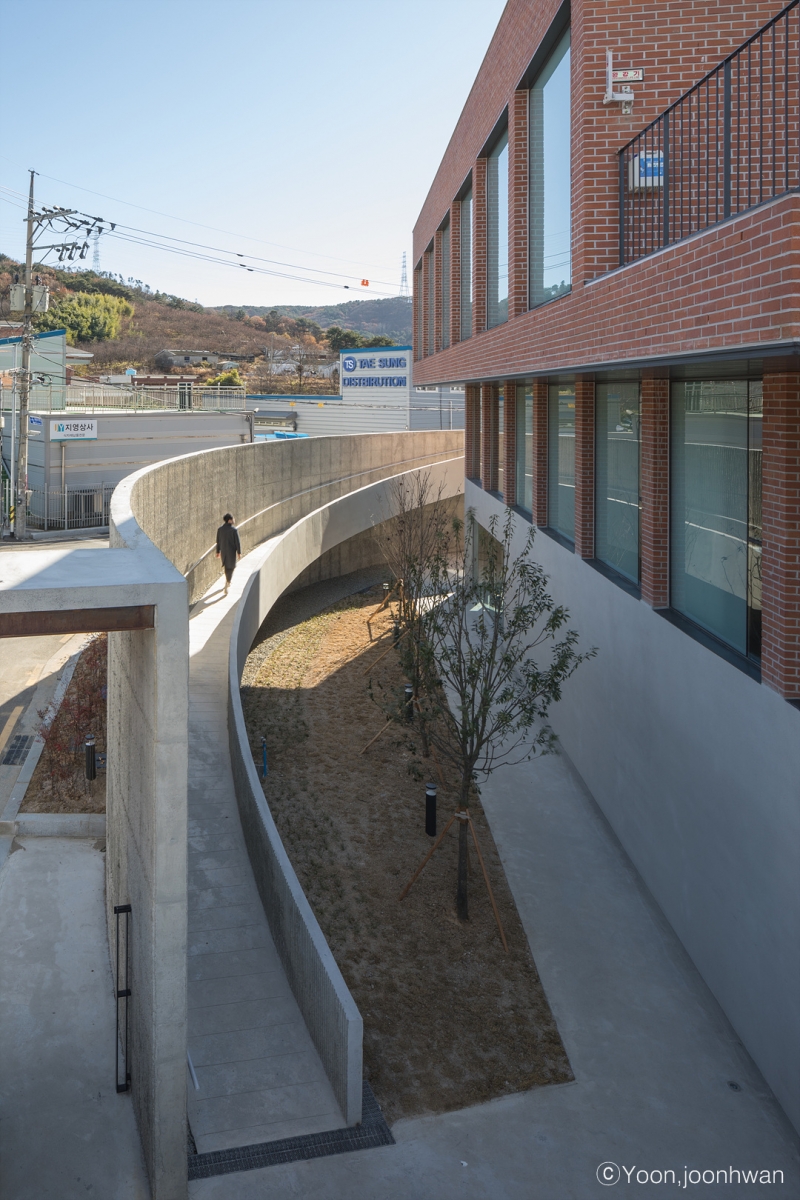
KAGA Architects & Planners (An Yongdae)
Kim Jinsoo, Han Yesol, Ahn Taedoo, Kwak Sunchan
Anpyeong-ro 11gil, Cheolma-myeon, Kijang-gun, Busa
religious facility
1088m²
650.51m²
791.68m²
3F
17
12.2m
59.79%
72.76%
reinforced concrete
red brick, triangular rib exposed concrete, Corten
red brick, exposed concrete, granite
Mintech Structure & Equipment
Mintech Structure & Equipment
Kwangmyoung Engineering
Daejeong Construction
Jan. – Dec. 2016
Apr. – Nov. 2017
Catholic Busan Barefoot Carmelites
National University. He has worked at Space Group, IROJE Architects & Planners, and his representative works are
Yosan Literary Museum, Miraero Women’s Hospital, and Building of DIO. He opened group exhibitions in museums
and galleries including Busan Museum of Art, Sungkok Art Museum, and SPACE BANDEE.





